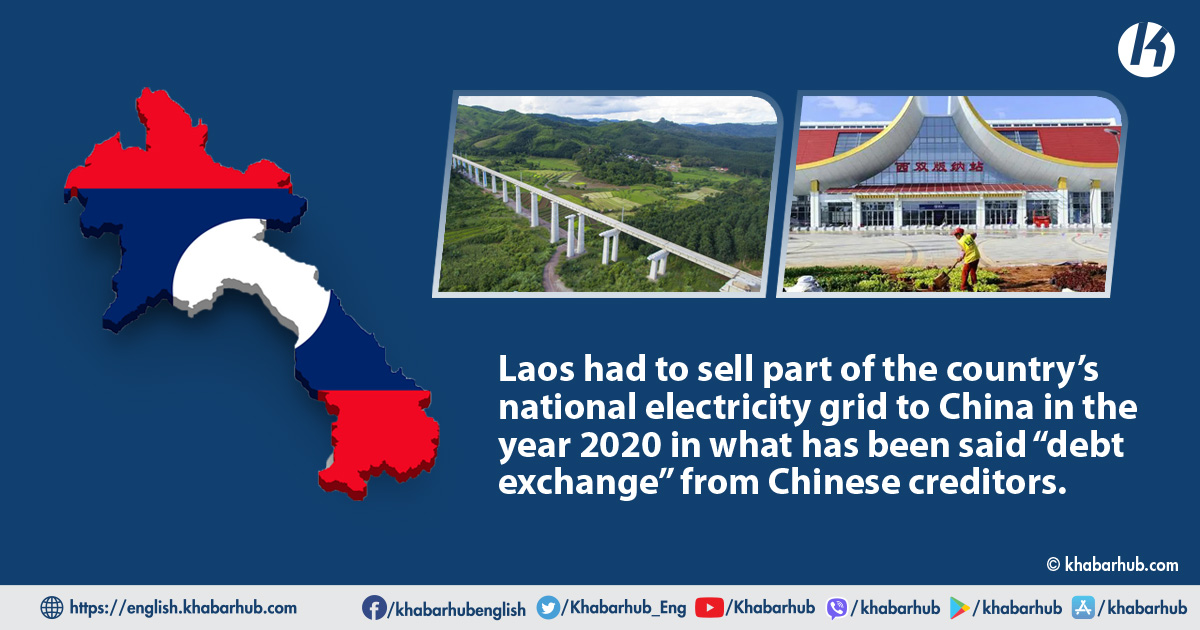KATHMANDU: It may come as a surprise to many that Laos’ overall level of debt exposure to China is equivalent to 64.8 percent of its GDP.
This also includes 35.4 percent of GDP worth of hidden debt that comes with the China-Laos railway megaproject, according to reports.
China’s economic presence in Laos has expanded greatly since the turn of the century.
Likewise, in 2013, China emerged as the largest investor in Laos.
Similarly, in 2017, China became the top investor and donor and the second-largest trading partner for Laos.
It should be noted that the high-speed rail project USworth $5.9 billion connecting Vientiane to Boten town in China is the largest BRI project in Laos.
According to Fitch, Laos owed around US$500 million in debt repayments for the remainder of 2020, with a further US$1.1 billion required annually until 2024.
It has been hoped that Laos’ export to China will increase by 60 percent and that the country will be able to receive more than 1 million Chinese tourists per year.
However, reports say that there is a high risk of Laos falling into a vicious debt cycle when it comes to infrastructure lending from Chinese financial institutions.
Concerns have been raised that the rail project might lead to a “debt trap” as it is worth about one-third of the country’s GDP, and mainly because China funds 70 per cent of its total costs because of which Laos has incurred an estimated US$1.5 billion in external debt to China.
Meanwhile, China Southern Power Grid, China’s state-owned company, will soon take a controlling stake in Laos’ national power grid by entering into a partnership with the state-owned electricity company, Electricite du Laos, which has an outstanding debt of around US$5 billion.
The amount is considerable for a country like Laos which has a nominal GDP of around US$20 billion and official foreign exchange reserves of just US$1.1 billion, according to reports.
It is also because the projects under China’s Belt and Road Initiative (BRI), coupled with robust vaccine diplomacy, are critical sources for Chinese soft power and economic influence in the region.
According to Fitch, Laos owed around US$500 million in debt repayments for the remainder of 2020, with a further US$1.1 billion required annually until 2024.
Laos’ debt challenge is deeply concerning, with several media reports suggesting the country is falling into a debt trap as a result of Chinese infrastructure investments under the Belt and Road Initiative (BRI).
According to reports, almost half of Laos’ total public debt is held by China, with a US$5.9 billion loan for the Vientiane–Boten high speed rail project and Chinese-funded hydropower development “figuring prominently” in the figure.
Reports also said that the high speed railway is the most expensive megaproject in Laos.
Meanwhile, China Southern Power Grid, China’s state-owned company, will soon take a controlling stake in Laos’ national power grid by entering into a partnership with the state-owned electricity company, Electricite du Laos, which has an outstanding debt of around US$5 billion.
This partnership between China and Laos is likely to draw Laos further into China’s orbit and debt-trap.
(With inputs from Agencies)









Comment